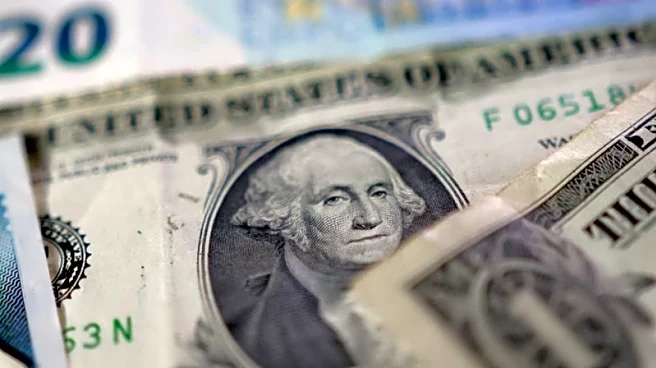What's Happening?
The U.S. dollar has strengthened against major currencies as traders adjust their expectations for a potential rate cut by the Federal Reserve. This shift comes ahead of Federal Reserve Chair Jerome Powell's speech at the Jackson Hole symposium. Recent economic data indicating inflationary risks have tempered hopes for a reduction in borrowing costs. Traders are now pricing in a 70% chance of a 25 basis point rate cut in September, down from 75% earlier. Fed officials have expressed caution regarding an imminent rate cut, citing mixed economic data and unexpectedly high inflation. The 2-year U.S. Treasury yield has increased, reflecting these adjusted expectations.
Why It's Important?
The Federal Reserve's cautious stance on rate cuts is significant for the U.S. economy, as it impacts borrowing costs and financial market stability. A rate cut could stimulate economic activity by making borrowing cheaper, but concerns about inflation suggest that the Fed may prioritize price stability over growth. This decision affects various stakeholders, including businesses, consumers, and investors, who rely on predictable interest rates for planning and investment. The Fed's approach could influence economic growth and inflation rates, impacting sectors such as housing, consumer spending, and investment.
What's Next?
Federal Reserve Chair Jerome Powell's upcoming speech at the Jackson Hole symposium is expected to provide further insights into the Fed's monetary policy direction. Market participants will closely watch for any signals regarding future rate cuts or hikes. The Fed's decision will likely be influenced by ongoing economic data, including inflation rates and labor market conditions. Stakeholders, including businesses and investors, will need to adapt their strategies based on the Fed's policy signals, potentially affecting investment decisions and economic forecasts.
Beyond the Headlines
The Fed's cautious approach highlights the complex balance between stimulating economic growth and controlling inflation. This situation underscores the challenges central banks face in managing monetary policy amid uncertain economic conditions. The Fed's decisions could have long-term implications for economic stability and growth, influencing public confidence and market dynamics.












